In today’s digital landscape, a website is more than a virtual storefront, it’s a dynamic tool for brand storytelling, user engagement, and business growth. As user expectations evolve and technologies advance, a website redesign becomes essential to stay competitive. This guide provides a step-by-step roadmap to navigate the redesign process, enriched with actionable insights and current trends to ensure your website delivers measurable results.
1. Why Redesign Your Website?
A website redesign isn’t just about aesthetics; it’s about aligning with modern standards and business goals. Common triggers include:
- Outdated Design: Visuals or layouts that feel stuck in the early 2010s.
- Poor Performance: Slow load times or high bounce rates (e.g., pages loading over 2 seconds can lose 40% of users).
- User Complaints: Navigation issues or lack of mobile optimization (over 60% of web traffic is mobile in 2025).
- Business Evolution: New products, services, or rebranding efforts.
- SEO Challenges: Declining rankings due to outdated content or technical issues.
Actionable Tip
Use tools like Google Analytics 4, PageSpeed Insights, or Hotjar to audit your site’s performance, user behavior, and technical health.
2. Assessing Your Current Website
Before redesigning, evaluate your website’s strengths and weaknesses to inform your strategy.
Key Areas to Audit
- Performance Metrics: Analyze bounce rates, session duration, and conversion rates.
- User Experience (UX): Test navigation, mobile responsiveness, and accessibility (e.g., WCAG 2.2 compliance).
- Visual Appeal: Assess if fonts, colors, and imagery align with 2025 design trends like minimalism or bold typography.
- Content Quality: Identify outdated, irrelevant, or low-performing content.
- Technical Health: Check for broken links, crawl errors, or outdated plugins.
Tools to Use
- Google Search Console: For SEO and technical issues.
- Lighthouse: For performance and accessibility scores.
- User Testing Platforms: Like UserTesting.com for real user feedback.
3. Defining Redesign Goals
Clear objectives keep your redesign focused and measurable. Align goals with business priorities, such as:
- Increasing conversions by 20% (e.g., form submissions or sales).
- Reducing bounce rates by optimizing load times.
- Enhancing brand perception through modern visuals.
- Improving SEO rankings for target keywords.
- Ensuring accessibility for diverse audiences.
SMART Goal Example
“Boost e-commerce conversions by 15% within 6 months by improving mobile UX and streamlining checkout processes.”
4. Understanding Your Audience
A user-centric redesign resonates with your target audience. In 2025, personalization and inclusivity are key drivers of engagement.
Research Methods
- Surveys and Feedback: Use tools like Typeform to gather user preferences.
- Analytics: Study demographics, behavior flows, and device usage in Google Analytics.
- Heatmaps: Tools like Crazy Egg reveal where users click or drop off.
- Social Listening: Monitor X posts or Reddit threads for audience sentiment.
2025 Audience Trends
- Gen Z Dominance: Prioritize bold visuals, short-form content, and interactive elements.
- Accessibility Expectations: 25% of users expect screen reader compatibility and high-contrast modes.
- Sustainability Concerns: Highlight eco-friendly practices if aligned with your brand.
5. Crafting a Strategic Redesign Plan
A well-defined plan ensures smooth execution and stakeholder alignment.
Plan Components
- Scope: Define features (e.g., blog, e-commerce, chatbots) and pages to redesign.
- Timeline: Set realistic milestones (e.g., 3 months for a medium-sized site).
- Budget: Account for design, development, content, and testing costs.
- Team Roles: Assign designers, developers, content creators, and project managers.
- Tech Stack: Choose platforms like WordPress, Shopify, or headless CMS based on needs.
Collaboration Tip
Use tools like Trello, Asana, or Notion for project management and cross-team communication.
6. Revamping Visual Design
A modern visual identity captivates users and reinforces your brand.
2025 Design Trends
- Micro-Animations: Subtle hover effects or loading animations enhance engagement.
- Bold Typography: Large, expressive fonts for hierarchy and readability.
- Dark Mode: Offer toggle options for user comfort.
- 3D Elements: Subtle 3D visuals for depth (avoid overuse to maintain performance).
- Asymmetrical Layouts: Break from rigid grids for creativity.
Branding Checklist
- Update color palettes to align with brand guidelines.
- Choose accessible fonts (e.g., Open Sans, Roboto).
- Use high-quality, inclusive imagery reflecting diverse audiences.
7. Enhancing User Experience (UX)
A seamless UX reduces friction and boosts retention. In 2025, users expect intuitive, fast, and inclusive experiences.
UX Best Practices
- Streamlined Navigation: Limit menu items to 5–7 for clarity.
- Mobile-First Design: Optimize for touch interactions and smaller screens.
- Fast Load Times: Aim for under 2 seconds using lazy loading and CDN.
- Accessibility: Implement ARIA labels, keyboard navigation, and alt text.
- Personalization: Use AI to recommend content based on user behavior.
Tools for UX
- Figma: For wireframing and prototyping.
- axe DevTools: For accessibility testing.
- Optimizely: For A/B testing UX variations.
8. Optimizing Content Strategy
Content drives engagement, SEO, and conversions. A robust strategy ensures your message resonates.
Content Audit Steps
- Identify outdated or low-performing pages.
- Map content to user journey stages (awareness, consideration, decision).
- Optimize for SEO with keyword research (e.g., Semrush, Ahrefs).
Content Creation Tips
- Short-Form Content: Break text into scannable chunks with subheadings.
- Video Integration: Embed explainer videos or tutorials (popular in 2025).
- Voice Search Optimization: Use natural language for queries like “best coffee shops near me.”
- Inclusive Language: Avoid jargon and ensure cultural sensitivity.
9. Leveraging Modern Technologies
Advanced tech elevates functionality and user satisfaction.
Must-Have Features
- Headless CMS: For flexibility and faster content updates (e.g., Contentful).
- Progressive Web Apps (PWAs): For app-like experiences and offline access.
- AI Chatbots: For 24/7 customer support (e.g., Drift, Intercom).
- Web3 Integration: Explore decentralized features like NFT galleries if relevant.
- Voice Search: Optimize for Siri, Alexa, and Google Assistant.
Security Considerations
- Use HTTPS and SSL certificates.
- Implement GDPR/CCPA-compliant cookie consent.
- Regularly update plugins and frameworks.
10. Testing and Quality Assurance
Rigorous testing ensures a polished, bug-free launch.
Testing Phases
- Functional Testing: Verify forms, links, and features work across browsers.
- Performance Testing: Use GTmetrix to check load times.
- Usability Testing: Collect feedback from 5–10 real users.
- Accessibility Testing: Ensure WCAG 2.2 compliance.
- Cross-Device Testing: Test on iOS, Android, and desktop devices.
Common Pitfalls
- Overlooking edge cases (e.g., low-bandwidth users).
- Skipping responsive design checks for foldable phones.
- Ignoring 404 error handling.
11. Launching Your Redesigned Website
A successful launch maximizes impact and minimizes disruptions.
Launch Checklist
- Backup Existing Site: Prevent data loss.
- SEO Preservation: Set up 301 redirects for old URLs.
- Marketing Push: Announce via email, X posts, and paid ads.
- Monitoring Tools: Install Google Analytics 4 and Search Console.
Post-Launch Tasks
- Monitor for bugs or performance dips.
- Track KPIs like traffic, conversions, and bounce rates.
- Collect user feedback via surveys or live chat.
12. Continuous Improvement
A website is never “done.” Regular updates keep it relevant and effective.
Optimization Strategies
- A/B Testing: Experiment with CTAs, layouts, or colors.
- Analytics Review: Monthly KPI checks to identify trends.
- Content Refresh: Update blogs or product pages quarterly.
- Tech Updates: Patch CMS or plugins to maintain security.
2025 Maintenance Trends
- AI-Driven Insights: Use tools like HubSpot for predictive analytics.
- Zero-Downtime Updates: Leverage CI/CD pipelines for seamless changes.
- User Feedback Loops: Integrate tools like Qualtrics for ongoing input.
Conclusion
A website redesign in 2025 is a strategic opportunity to elevate your brand, engage users, and drive growth. By auditing your current site, setting clear goals, prioritizing UX, and embracing modern technologies, you can create a website that stands out in a crowded digital space. For more insights or professional support, visit our official website.

